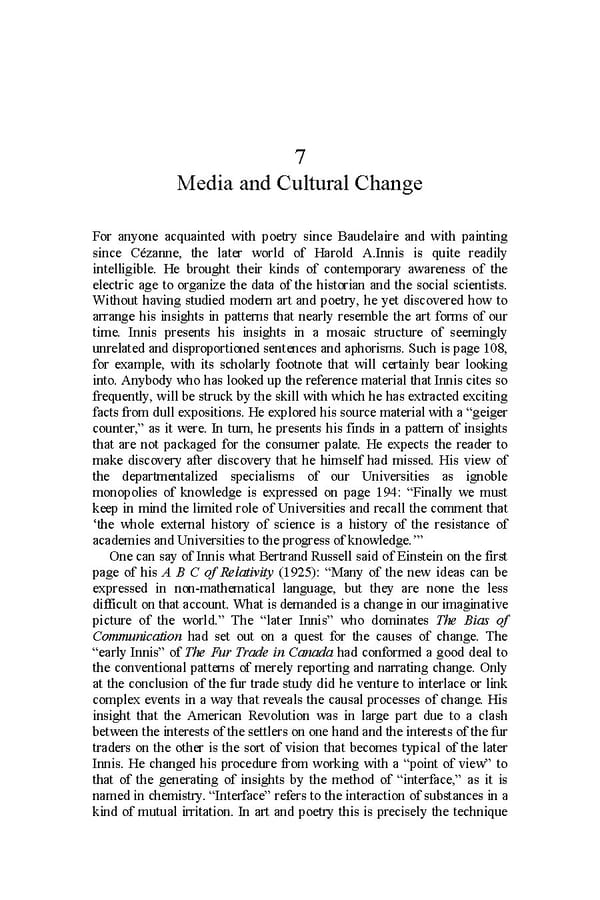7 Media and Cultural Change For anyone acquainted with poetry since Baudelaire and with painting since Cézanne, the later world of Harold A.Innis is quite readily intelligible. He brought their kinds of contemporary awareness of the electric age to organize the data of the historian and the social scientists. Without having studied modern art and poetry, he yet discovered how to arrange his insights in patterns that nearly resemble the art forms of our time. Innis presents his insights in a mosaic structure of seemingly unrelated and disproportioned sentences and aphorisms. Such is page 108, for example, with its scholarly footnote that will certainly bear looking into. Anybody who has looked up the reference material that Innis cites so frequently, will be struck by the skill with which he has extracted exciting facts from dull expositions. He explored his source material with a “geiger counter,” as it were. In turn, he presents his finds in a pattern of insights that are not packaged for the consumer palate. He expects the reader to make discovery after discovery that he himself had missed. His view of the departmentalized specialisms of our Universities as ignoble monopolies of knowledge is expressed on page 194: “Finally we must keep in mind the limited role of Universities and recall the comment that ‘the whole external history of science is a history of the resistance of academies and Universities to the progress of knowledge.’” One can say of Innis what Bertrand Russell said of Einstein on the first page of his A B C of Relativity (1925): “Many of the new ideas can be expressed in non-mathematical language, but they are none the less difficult on that account. What is demanded is a change in our imaginative picture of the world.” The “later Innis” who dominates The Bias of Communication had set out on a quest for the causes of change. The “early Innis” of The Fur Trade in Canada had conformed a good deal to the conventional patterns of merely reporting and narrating change. Only at the conclusion of the fur trade study did he venture to interlace or link complex events in a way that reveals the causal processes of change. His insight that the American Revolution was in large part due to a clash between the interests of the settlers on one hand and the interests of the fur traders on the other is the sort of vision that becomes typical of the later Innis. He changed his procedure from working with a “point of view” to that of the generating of insights by the method of “interface,” as it is named in chemistry. “Interface” refers to the interaction of substances in a kind of mutual irritation. In art and poetry this is precisely the technique
 Essential McLuhan Page 88 Page 90
Essential McLuhan Page 88 Page 90